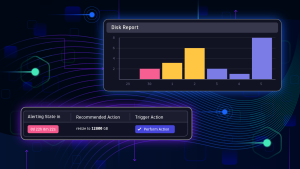As we turn the page on 2023, new challenges and opportunities lie ahead for the public sector market in 2024.
With a new year now in full swing, industry watchers are preparing their predictions for 2024. And they expect a new set of challenges and opportunities will emerge for the public sector market. Technology is evolving at a rapid pace, and government agencies need to keep up with the latest innovations and trends to deliver better services, enhance security, and optimize performance.
In 2024, we expect to see several new developments in AI regulation, with a focus on ensuring the security of AI innovations. In line with this theme of security, zero-trust frameworks will remain a top priority. Additionally, the process of obtaining FedRAMP certifications is expected to become more streamlined. Finally, government agencies will continue to prioritize the citizen experience, making it a key area of focus in the coming year.
In this blog post, we explore some of these public sector predictions for 2024 and delve further into how these emerging trends and technologies will shape the year ahead.
Public sector prediction No. 1: AI regulation will increase.
In 2024, government AI regulation will accelerate, likely focusing on security and risk assessment, as businesses continue to implement AI technologies throughout their organization.
The pace of AI innovation is accelerating rapidly as generative AI makes its way into every sector. As evidenced by the recent AI Executive Order from the Joseph Biden administration, government agencies have started to introduce new forms of regulation and mandated new roles, such as chief AI officers, to ensure AI technologies are adopted safely.
Public sector prediction No. 2: Observability data will become key for implementing zero trust effectively.
In 2024, organizations will use insights from observability data to streamline zero-trust implementation and execution.
A zero-trust security strategy is becoming the standard for government agencies. But to implement it effectively, organizations need to measure their entire technology landscape to ensure their organization is secure and that they can accomplish the objectives of a zero-trust architecture.
Observability is now at the forefront of zero-trust strategies, serving as the key to unlocking the full potential of zero trust’s extended framework. This new focus on cloud visibility underscores its importance in ensuring comprehensive monitoring and transparency across the network. In today’s complex digital landscape, where traditional boundaries are blurred, the integration of enhanced visibility tools becomes indispensable in identifying and mitigating vulnerabilities, truly revolutionizing the approach to network security and risk management.
Therefore, in 2024, organizations will further rely on insights from observability data to provide end-to-end visibility into their systems and services, allowing them to measure user realities in conjunction with their zero-trust security initiatives.
Public sector prediction No. 3: FedRAMP certifications will be increasingly streamlined.
In 2024, the U.S. Office of Management and Budget (OMB) will likely make the process of achieving FedRAMP certifications smoother.
Streamlining the process of obtaining these certifications reinforces the idea that the government is serious about making the program work. Until now, it has been viewed as a bottleneck process that delays the delivery of cloud services, which ultimately undermines modernization efforts.
Approximately one-third of U.S. states actively participate in StateRAMP. Notably, achieving FedRAMP approval serves as a gateway to seamless StateRAMP approval. Consequently, vendors that successfully obtain FedRAMP authorization gain the significant advantage of automatic approval in one-third of the states across the nation. This interconnected approval process opens new avenues, allowing products and services to flow through an expanded network of pipelines, thereby increasing accessibility and potential market reach.
Public sector prediction No. 4: The citizen experience will become a higher priority for government organizations.
In 2024, government agencies will prioritize enhancing the digital citizen experience.
In today’s digital-first world, citizens now expect consumer-like experiences in every interaction with government organizations. The goal is to create a frictionless experience that encourages engagement and fosters satisfaction among citizens and employees alike. By doing so, government agencies can deliver better services, enhance security, and optimize performance, thereby meeting the high expectations of modern users in today’s digital-first world.
Looking ahead
The federal market is poised for transformative change in the coming year. AI regulation will continue to expand to focus on security, while zero-trust frameworks will become easier to monitor with the use of observability. Streamlining FedRAMP certifications will facilitate a smoother transition to cloud-based solutions, and enhancing citizen experience will ensure public services are more accessible and user-friendly. Navigating the evolving landscape of the federal market will continue to be a challenge, but with proactive adaptation and strategic planning, government organizations can meet the demands of the future.
To learn more about Dynatrace predictions for 2024 in the public sector, as well as to hear more insights from Roger Cressey, partner at Mountain Wave Ventures, and Ross Nodurft, executive director at the Alliance for Digital Innovation, check out the latest episode of Dynatrace Tech Transforms Episode.





Looking for answers?
Start a new discussion or ask for help in our Q&A forum.
Go to forum